When you step foot into the bottom floor of Aloha for People’s two-story headquarters—also known as Brian Poage (Cal Poly San Luis Obispo) and Emily Sansom’s Hermosa Beach apartment—the first thing you notice are the surfboards: longboards, pumpkin seeds, twin fins, and foamie boards. There are ten of them in total, making the surfboard to person ratio 10:4. One of the surfboards is glass-stamped with the Aloha for People logo, seamlessly blending their pastime with their t-shirt brand.
The second floor is a beach lover’s dream: a spacious living room area, fully-stocked wet bar, and large balcony with a “Gone Surfin” sign above it overlook the Pacific Ocean, less than half of a mile away.
On the day of our interview, the skyline is dreary; you can barely make out the ocean due to the haze from a rainstorm. Yet Brian is all smiles. He could be the poster boy for a local surf shop: sandy blonde hair, a dazzling white smile, and an Aloha for People t-shirt. The mustache and beard are the only giveaways that the 27-year-old isn’t a recent grad.
After speaking with him for a while, it’s obvious that the only thing that surpasses his passion for surfing is his passion for spreading Aloha through his company. “The reason I named it ‘Aloha’ is because in Hawaiian culture it means way more than just hello and goodbye. It means things like love, compassion, caring. It’s an entire mindset and way of life,” he shares.
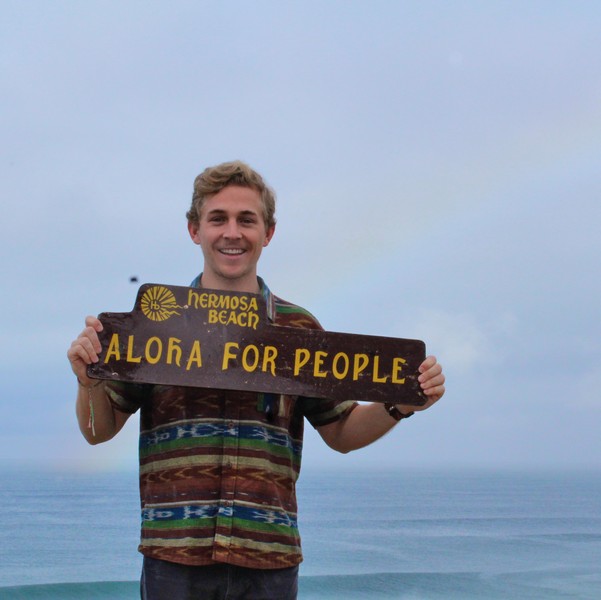
What If…?
The idea for Aloha for People originated in May of 2016, when Brian, a project manager for a development company, and his fiancé Emily Sansom, a fashion apparel sales rep, wanted something more meaningful than what their 9-to-5s offered. “I read Blake Mycoskie’s book, ‘Start Something that Matters,’ and it really struck a chord with me,” Brian explains. The pair wondered whether they could create a company similar to TOMS, that would exist to help people and also provide a really meaningful and lucrative product. Since Emily worked in the apparel industry, they explored opportunities in that space.
Brian had always loved the concept behind Hawaii’s Aloha shirts: “The reason they were made was to be like a flag that people could wear that represented the Hawaiian culture after they left the islands—hence why they have these really unique pieces of palm trees or islands or the ocean. It was so that when you left you were an Aloha ambassador and you could, you know, spread the Aloha beyond the islands.”
Once Brian and Emily had the concept for creating Aloha shirts, they needed to identify a region with an outstanding need and a rich culture that could be shared via a shirt. “I knew that Guatemala had incredible textiles that were very, very unique, mostly because of their combined Mayan and Spanish heritage. And I knew they had a horrible water situation.”
The pair created a dynamic, sustainable business model for the company: buy beautiful textiles hand-woven by women in rural parts of Guatemala (creating jobs in the region), sow the textiles into Aloha shirts in downtown Los Angeles (creating jobs in the US), and sell the shirts at a price point that could provide clean water in a sustainable way without relying on donations.
Every shirt purchased through Aloha for People gives one school child access to a water filter for two years. “I wanted to give a measurable quantity of how much water we’re giving, ‘cause for me, especially as a buyer, I knew TOMS resonated with me because it was one pair of shoes for a child. It wasn’t 10 percent of whatever proceeds they made,” Brian explains.
After a lengthy internet search, they eventually partnered with Ecofiltro, a company that produces clay water filters; Guatemalan-born, U.S.-raised entrepreneur Philip Wilson founded the company in 2009.
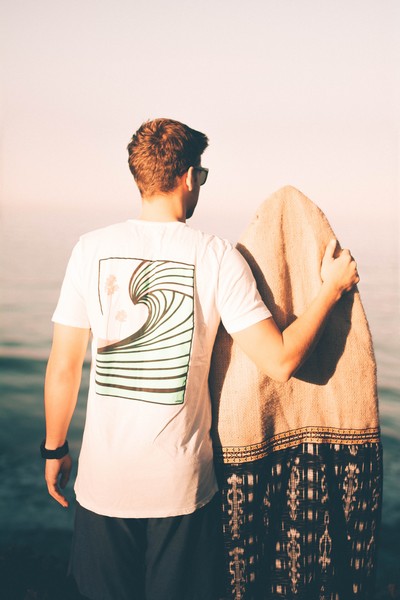
The Start-Up
Brian kickstarted the project in October of 2016. “When we launched this company, we decided to put this on Kickstarter and see how people respond to it. We raised like $8,000 the first day,” he recounts, beaming. “And I bet you more than half was from my brothers, people who wanted to give back and be part of it.”
The campaign slightly exceeded its $25,000 goal and received its LLC in December 2016. The company used that seed money to produce 600 shirts, most of which have sold. In fact, this initial trial launch was so successful that the company expanded its geographic reach and product line. Today it spreads Aloha in Guatemala and Nepal and offers surfboard fins, pocket tees, and pocket tank tops for ladies, in addition to their signature Aloha shirts.
As of December 2017, Aloha for People has provided 640 Guatemalan children access to clean water since they produced the first Aloha shirt in May 2017. Another 25 children in Nepal have received clean water access since December 2017. “And I’m hoping to do more,” Brian adds.
It’s clear he will. Since the company’s launch, he has poured thousands of hours and tens of thousands of his personal money into spreading Aloha.
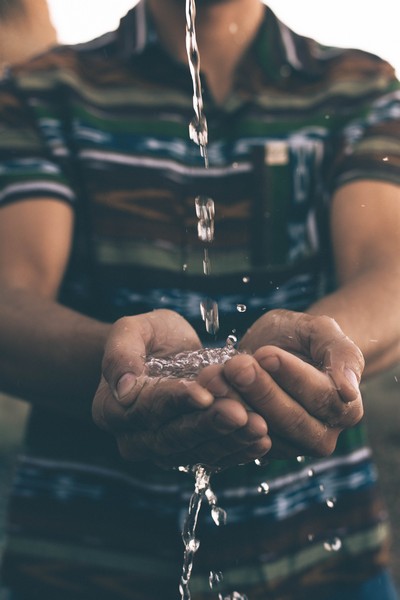
Business Ethics
To Brian, spreading Aloha isn’t just about providing clean water through a sustainable economic model; his company is equally committed to caring for the environment.
All of the brand’s t-shirts are made either from organic cotton or recycled plastic fibers, through a partnership with Groceries Apparel, a company local to Hermosa Beach.
Brian explains the logic behind the decision: “The reason organic cotton is interesting is because it’s grown without pesticides and requires typically a lot less water. And recycled fibers is because plastic is one of the world’s problems; they’re saying that by 2050 we will have more plastic per pound in the ocean than fish, at the rate we’re going.”
A guiding principle behind the company is that less is less, thus better for the environment. Brian would like to see this principle utilized in the industry as a whole: “I think especially in the apparel industry there has been no regard for environment in a long time, especially [...] trends like fast fashion—coming out with new, different types of clothes that are made very cheaply, to last six months to a year max. Then they get tossed in a landfill … I think that’s so wrong. I don’t think it’s a sustainable business model, though it’s made a lot of people very rich in a short period of time. And unfortunately our beautiful planet is taking the toll.”
Brian has no qualms about creating a business that sells fashion, because he’s focusing on products with a long shelf life. “We make sure the cotton is nice and sturdy, and we make everything and sew it all together so that it’s going to last 10 years, hopefully. It costs a little more to do that but our goal is to—it’s what Patagonia is trying to do—to create this mind-shift that you don’t need so many clothes, if the clothes you buy are really nice.”
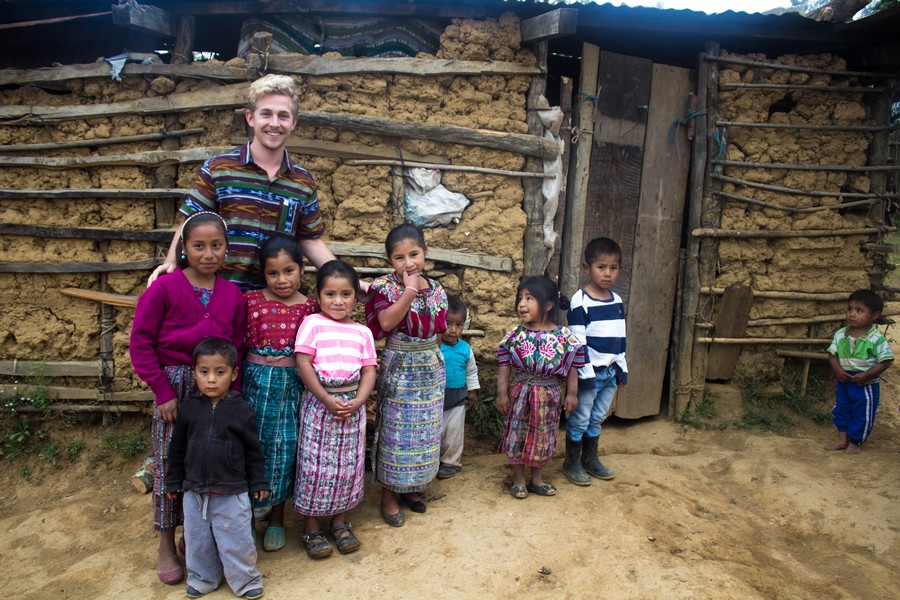
The Brotherhood
Although Brian never envisioned himself owning a clothing company, he says that his involvement in the Kappa Pi (Cal Poly San Luis Obispo) Chapter helped prepare him for his entrepreneurial journey. He received his first internship as a field engineer and laborer for Sundt Construction through Ryan Holman, his grand big brother. Brian also gained his first experiences managing projects at Cal Poly: “I was the social chair for two years and there was a lot of coordination. There were some things that didn’t go my way; there was an event where a bus didn’t come. I learned how to deal with difficult situations. I had to figure out how to make it better. It was my first experience with project management. What I’m doing now is a larger version of project management.”
Brian’s leadership in Sigma Nu, coupled with his degree in construction management and five years of experience in project management, have uniquely positioned him to lead Aloha’s projects.
Through a partnership with the Surfrider Foundation, the company co-sponsored a bar crawl through the city of Santa Monica last summer, where each establishment had stopped the use of single-use plastic straws. “They are unnecessary,” he explains, emphatically.
Brian’s desire and ability to foster entrepreneurship both locally and internationally, namely his commitment to his global neighbor and his local neighbor, is noteworthy. The Aloha spring line, for example, will showcase beach designs created by Joe Vickers, a Southern California artist.
Similarly, a budding partnership with Floridian surf artist Rachel DeJohn will yield new designs for the company, while also supporting self-employed artists. Brian basks in the fact that these partnerships create a win-win-win. “I really like empowering people who are extremely artistic and talented, especially if it responds with the vibe and goals of our brand.”
He continues, “We still give the same amount for water, but we also give proceeds to them as the artist. I really like creating this artistic community around the brand, and I’d really love to expand that more.”
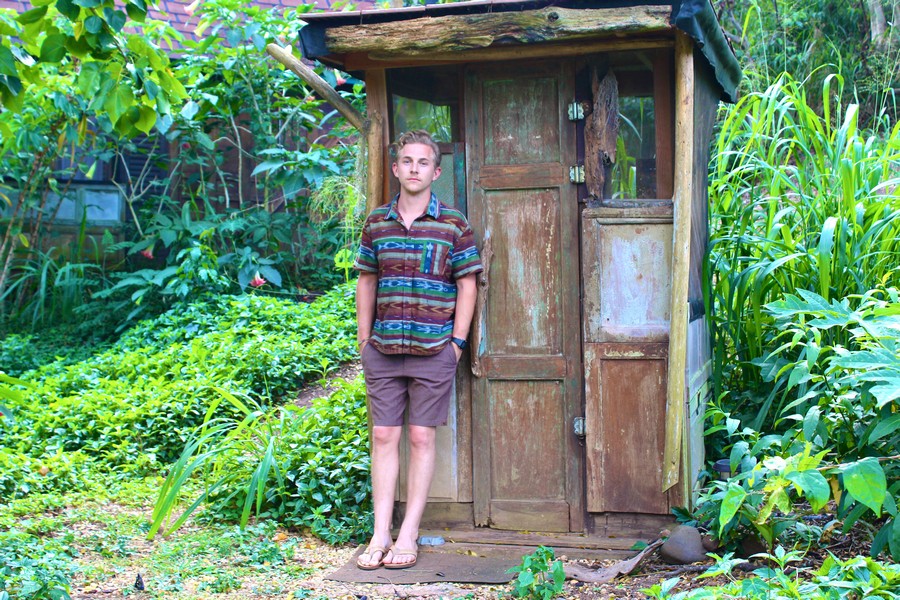
The Power of Partnerships
It’s the partnerships, with other brands and his Sigma Nu brothers, that have proven critical to the company’s expansion.
Brian’s most significant Sigma Nu partnership emerged in 2016. He asked his housemate and Sigma Nu Brother Jeff Michaels to create a logo. Excited by the brand’s mission, Jeff created several designs for the company and joined Brian and Emily as a partner after a few months. He’s now the chief branding officer.
“Jeff’s really talented,” Brian boasts. “It’s helped us instrumentally because the things we are able to put out into the world are extremely well-polished from a design standpoint. It’s gotten us into the stores, just by giving someone a well-thought out catalogue or flyer explaining what we do.”
That work involves supplying rush t-shirts for the Cal State San Luis Obispo Sigma Nu chapter, securing additional partnerships, and continuously recruiting Aloha Ambassadors.
Ambassadors embody the vision and the mission of Aloha. “They are out in the world spreading Aloha, telling everyone they can about us and our mission for water, and trying to get people more involved,” Brian explains. Several of his fraternity brothers are ambassadors, and a few are featured on the company’s website.
On the Horizon
2018 will be Aloha’s biggest year to date. Brian has clear goals: “In 2018 I want to sell at least 2,000 shirts across the board, I want to enter two new countries and states. One will definitely be Hawaii. One could be somewhere in Africa; we’re talking to one girl in Swaziland, which could be really interesting, especially because of the HIV issue they have, and how critical water is. And possibly somewhere in Southeast Asia.”
Equally important to him is deepening supporters’ commitment to the mission. Brian envisions a giving trip: “We had 180-some people give us money for the kickstarter. We had people emotionally invested in seeing us grow. I’d love to bring them down to Guatemala and have them personally hand out water filters that were provided because of their support and belief in our brand.”
It would be an expensive trip for the supporters, but well worth it in Brian’s mind: “It [Aloha] is an entire mindset that resonates with what we’re trying to do. We want to show that the people we are trying to help are not going to be forgotten, not going to be left behind. We are trying to empower them and make their lives better. I feel that’s how the love part of Sigma Nu corresponds: the love of humanity, the love of environment and fellow man.”